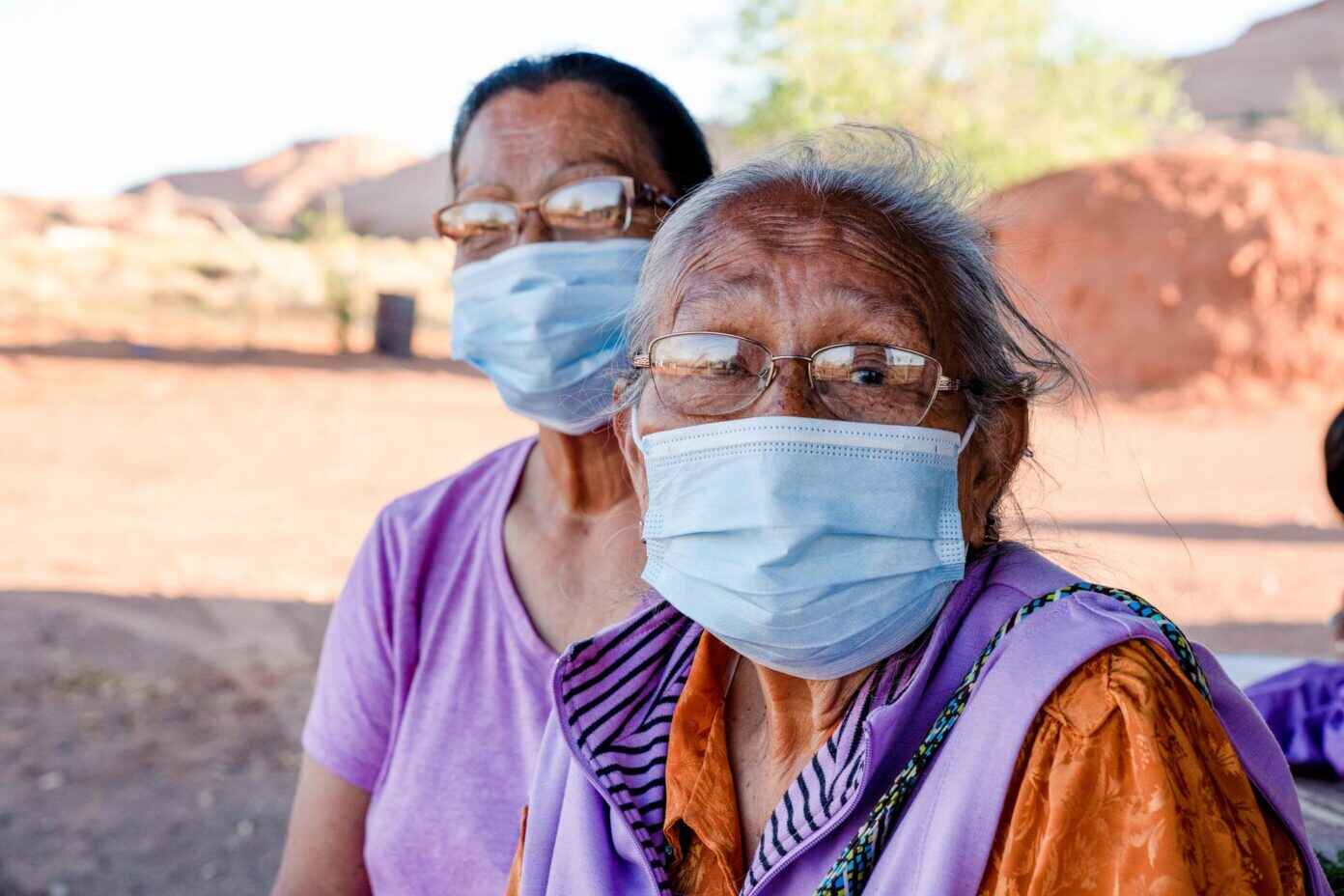Addressing Native American Food Insecurity During the COVID-19 Pandemic: The Older Americans Act Title VI Programs
August 24, 2020
Overview
This post is the second in a series focusing on efforts to address Native American food security during the COVID-19 Pandemic.
Senior citizens are especially vulnerable during the COVID-19 pandemic. This is due in large part to the fact that the risk of severe illness (e.g. hospitalization, intensive care, need for a ventilator or death) increases with age. As a result, 80 percent of COVID-19 related deaths in the United States have been adults aged 65 years and older. This elevated risk emphasizes the need for seniors to socially distance and take precautions to protect themselves. The increased isolation brought on by the pandemic, along with the economic hardship, puts seniors at a greater risk for food insecurity. Seniors are reluctant to venture out to secure groceries and the congregate feeding programs for seniors supported by the Older Americans Act (OAA) are closed for social distancing concerns.

Prior to the pandemic, a report by Feeding America estimated that 7.3 percent of senior citizens (5.2 million) were food insecure. The report showed racial disparities between White, Black and Hispanic senior citizens, respectively experiencing food insecurity at 6.2 percent, 15.1 percent, and 14.8 percent. Unfortunately, this report does not provide an accurate estimate of food insecurity among Native Americans because it groups Native Americans, Asians and Pacific Islanders into one category. The first post in this series identified similar problems identifying clear data on Native American food insecurity. However, The First Nations Development Institute and American Association for Retired People (AARP) issued a report in 2016 that indicated that 60 percent of Native American seniors live below the poverty line and that one in seven face the threat of hunger.
With the challenges of COVID-19 increasing the risk of food insecurity for tribal elders, the federal government has leveraged the OAA to provide support. Created in 1978, Title VI of the OAA authorizes funds for supportive and nutrition services to older Native Americans (American Indians, Alaska Natives and Native Hawaiians). The program covers services such as transportation, home delivered and congregate nutrition services, information and referral, and a wide range of home care services. The Administration for Community Living (ACL) administers Title VI programs for the Department of Health and Human Services. Title VI funds are awarded directly by ACL to Indian tribal organizations, Native Alaskan organizations and nonprofit groups representing Native Hawaiians.
To be eligible for funding, a tribal organization must represent at least 50 Native Americans aged 60 and older. Funds for eligible organizations are allocated based on their share of the American Indian, Alaskan Native and Native Hawaiian population aged 60 or older in their service area. However, once a tribal organization qualifies for funding, it has flexibility in the allocation of resources for covered services and can set the age that qualifies tribal elders for these services. Title VI grants are awarded to 270 tribal organizations representing approximately 400 tribes.
The fiscal year 2020 budget provided $34.7 million for Title VI supportive and nutrition services. However, in response to the pandemic, the federal government increased funding. The Family First Corona Virus Response Act (FFCRA) provided an additional $10 million for Title VI supportive and nutrition programs and the Coronavirus Aid, Relief and Economic Security (CARES) Act provided an additional $20 million. The ACL provides an exact allocation of these COVID-19 funds by tribe (FFCRA and CARES). These funds can be used for a broad spectrum of supplies and services including, but not limited to, home delivered meals, supplies to support the distribution of food (e.g. carry-out containers, warming bags, and coolers), stocking of food pantries for tribal elders, and personal protective equipment.
The newest round of federal stimulus bills is mixed regarding the Title VI program. The Health and Economic Recovery Omnibus Emergency Solutions (HEROES) Act, passed by the House in May, provides an additional $1 million for Title VI nutrition services. However, the Senate’s Health, Economic Assistance, Liability, and Schools (HEALS) Act does not provide any additional support to the Title VI nutrition services.
Given the vulnerability of tribal elders during the pandemic, the Network will continue to monitor the Congressional debate surrounding the next stimulus package and its impact on the OAA Title VI programs.
The next post in this series will focus on the Native American Food Sovereignty and its importance during COVID-19.
This post was developed by Mathew R. Swinburne, associate director, Network for Public Health Law—Eastern Region Office. The Network for Public Health Law provides information and technical assistance on issues related to public health.
The legal information and assistance provided in this document do not constitute legal advice or legal representation. For legal advice, readers should consult a lawyer in their state.
Support for the Network is provided by the Robert Wood Johnson Foundation (RWJF). The views expressed in this post do not represent the views of (and should not be attributed to) RWJF.
